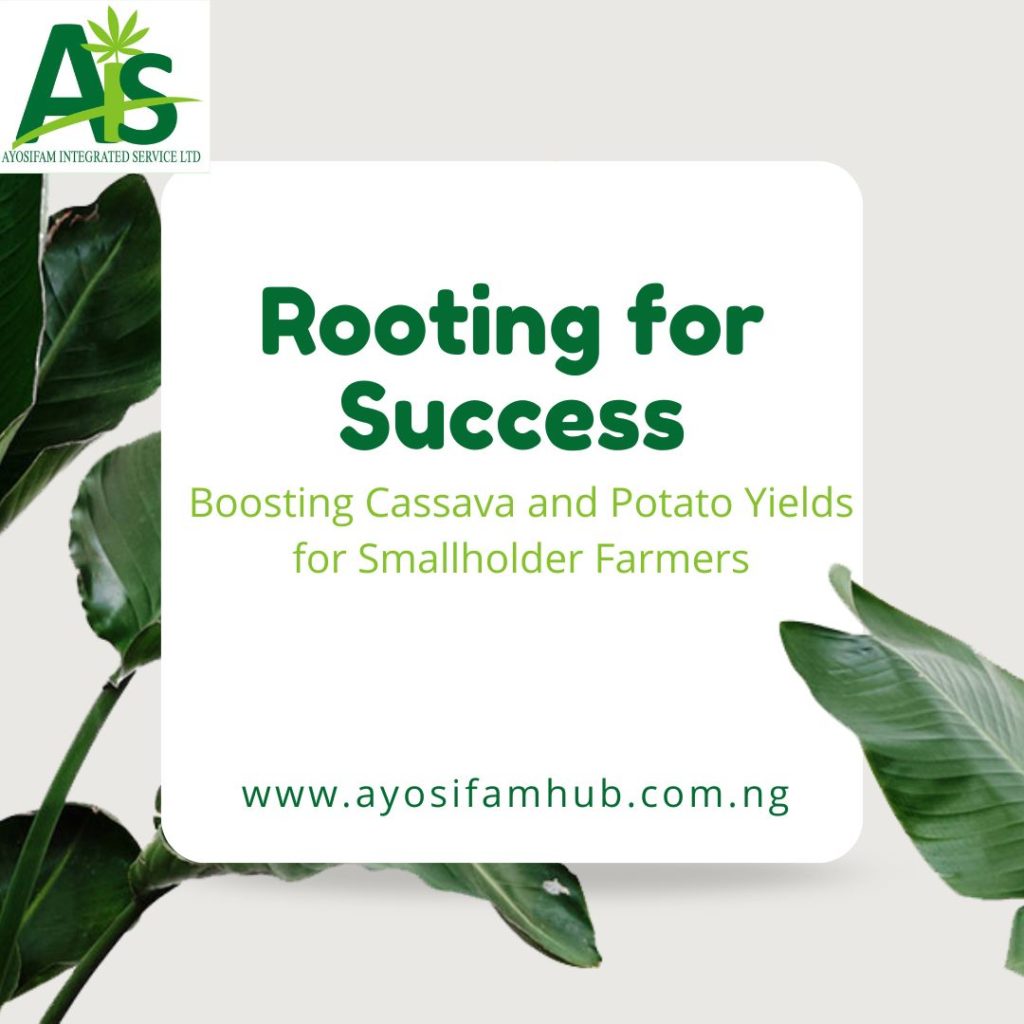For many smallholder farmers in regions like Kwara, Nigeria, cassava and potatoes are vital crops, providing sustenance and income. However, traditional farming methods often result in yields that barely meet household needs, leaving little room for economic growth. Fortunately, by adopting improved practices and technologies, smallholder farmers can significantly increase their productivity and achieve better harvests than ever before. Let’s dig into some effective strategies for both cassava and potato farming.
Unearthing Potential: Enhancing Potato Production
Potatoes, with their relatively short growing cycle and high nutritional value, offer a quick return on investment. To move beyond traditional yields, consider these approaches:
Quality Seed is Key: Start with certified, disease-free seed potatoes. These are bred for higher yields and resistance to common pests and diseases, giving your crop a strong foundation. Avoid using saved seed potatoes for too many generations, as they tend to accumulate diseases and lose vigor.
Soil Preparation Matters: Potatoes thrive in well-drained, loose soil rich in organic matter. Before planting, till the land thoroughly to improve aeration and drainage. Incorporate compost or well-rotted manure to enhance soil fertility and structure.
Strategic Planting: Plant seed potatoes at the recommended spacing to allow adequate room for tuber development and air circulation. Proper spacing reduces competition for nutrients and sunlight, leading to larger and more numerous potatoes. Consider planting in ridges or raised beds to further improve drainage.
Nutrient Management: Potatoes have specific nutrient requirements, particularly potassium. Conduct soil testing if possible to determine nutrient deficiencies and apply appropriate fertilizers. Organic options like compost and animal manure can provide a balanced supply of nutrients.
Water Wisely: Consistent moisture is crucial, especially during tuber initiation and development. Implement efficient irrigation techniques if water is scarce, such as drip irrigation, which delivers water directly to the root zone, minimizing waste. Avoid overwatering, which can lead to tuber rot.
Pest and Disease Control: Regularly monitor your potato plants for common pests like aphids, potato tuber moths, and diseases such as late blight. Implement integrated pest management (IPM) strategies, which combine cultural practices (like crop rotation and resistant varieties), biological control (using natural enemies of pests), and targeted application of appropriate pesticides when necessary.
Timely Harvesting: Harvest potatoes when they reach maturity. Leaving them in the ground for too long can increase the risk of damage and disease. Knowing the signs of maturity for your specific variety is essential for maximizing yield and quality.
Branching Out: Boosting Cassava Production
Cassava, a resilient and drought-tolerant crop, is a staple for millions. To increase its productivity, smallholder farmers can focus on:
Selecting Superior Varieties: Research and adopt improved cassava varieties that offer higher yields, are resistant to common diseases like cassava mosaic disease (CMD) and cassava brown streak disease (CBSD), and mature earlier. Local agricultural extension services can provide valuable information on suitable varieties for your region.
Healthy Planting Material: Use stem cuttings from healthy, disease-free mother plants. Ensure the cuttings are of the recommended length and have enough nodes for sprouting. Proper selection of planting material is the first step towards a productive harvest.
Optimizing Soil Health: Cassava can grow in relatively poor soils, but it responds well to improved soil fertility. Incorporate organic matter like compost or green manure into the soil before planting. Consider intercropping with legumes, which can help fix nitrogen in the soil, benefiting the cassava crop.
Proper Planting Techniques: Plant cassava cuttings at the recommended spacing and depth, typically in mounds or ridges to improve drainage and facilitate root development. The angle of planting can also influence sprouting and yield.
Weed Management: Weeds compete with cassava for water, nutrients, and sunlight, significantly reducing yields. Implement timely and effective weed control measures through manual weeding, mulching, or the judicious use of herbicides if appropriate and safe.
Pest and Disease Management: Monitor your cassava plants for pests like cassava mealybugs and whiteflies, which can transmit viral diseases. Implement IPM strategies, including the use of resistant varieties, biological control agents, and appropriate chemical control when necessary. Promptly address any signs of diseases like CMD or CBSD by removing and destroying infected plants.
Timely Harvesting: Cassava root maturity varies depending on the variety. Harvest at the optimal time to maximize root size and starch content. Delaying harvest can lead to woody roots and reduced quality.
Beyond the Basics: Embracing Innovation
In addition to these core practices, smallholder farmers can further enhance their productivity by:
Seeking Knowledge and Training: Engage with agricultural extension officers and participate in training programs to learn about the latest farming techniques and technologies.
Forming Cooperatives: Collaborating with other farmers can provide access to resources, markets, and collective bargaining power.
Investing in Simple Tools and Equipment: Even basic tools can improve efficiency and reduce labor.
Exploring Agroforestry Practices: Integrating trees with cassava and potato farming can improve soil health, provide shade, and offer additional income sources.
Embracing these improved practices and technologies, smallholder farmers in Kwara State and similar regions can move beyond traditional limitations and unlock the full potential of their cassava and potato farms. This shift towards increased productivity will not only improve food security and household incomes but also contribute to the overall economic development of their communities. The journey towards better yields starts with a commitment to learning, adapting, and rooting for success.




